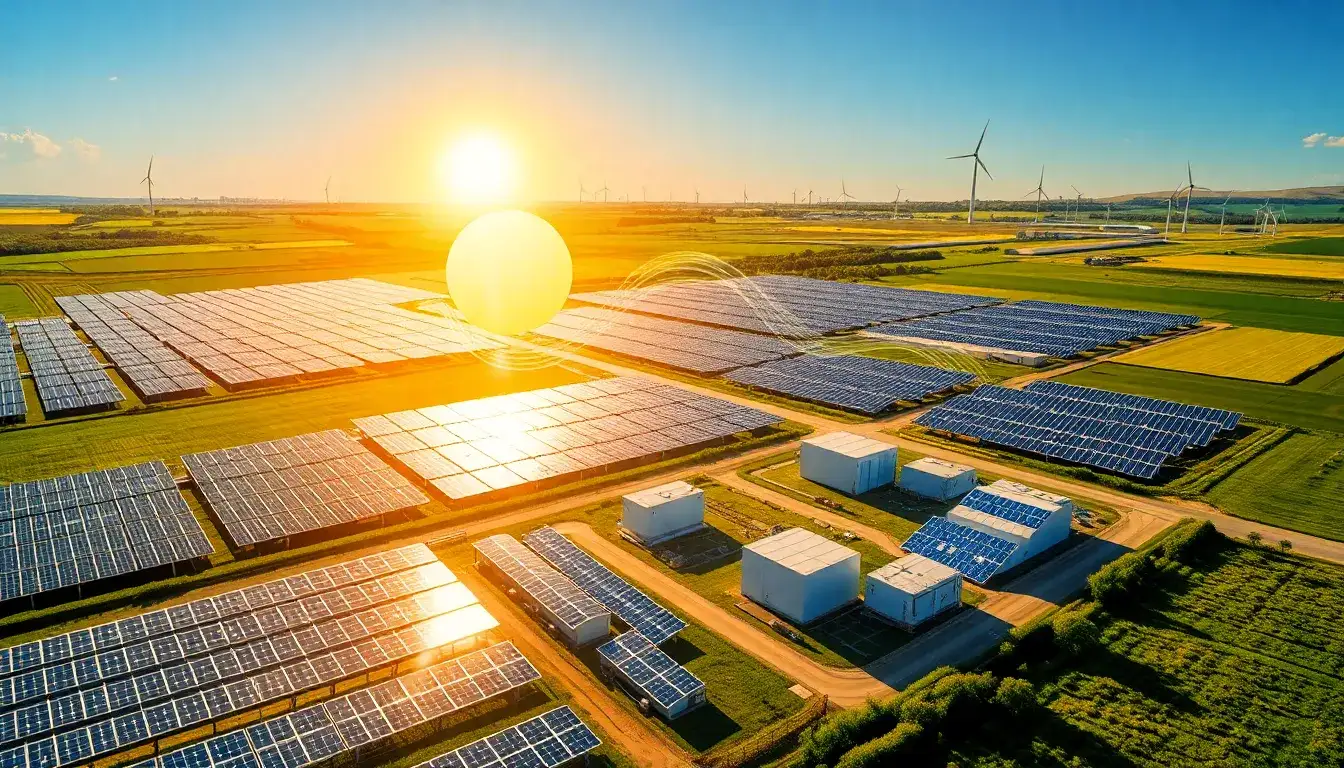
Renewable energy developers and independent power producers (IPPs) are increasingly recognizing the benefits of co-locating energy storage with solar projects, as discussed during the Solar Finance & Investment Europe (SFIE) 2025 conference held in London on February 4 and 5. This two-day event brought together a diverse group of stakeholders, including developers, investors, optimizers, financiers, and policymakers, and was covered by our sister sites, PV Tech and Solar Power Portal.
The Growing Appeal of Co-Location
On the first day of the conference, Lisa McDermott, managing director of project finance at ABN AMRO Bank, spoke about the rising attractiveness of hybrid portfolios that incorporate storage. She noted that while the bank is financing more merchant risk, hybrid projects are becoming preferred investment options. “If we’re doing merchant, we’ll do a more diverse portfolio,” McDermott stated. She highlighted a trend in the market where some players are stuck in their old ways while others are adapting by working on their business cases and revenue stabilization through hybridization and co-location.
Rising Curtailment and Its Impact
The second day featured a panel discussion led by Ben Fulton, senior consultant at Apricum Group, which focused on the challenges of co-locating solar and storage projects. A poll indicated that approximately 43% of attendees identified grid interconnection and permitting as the most significant barriers to these co-located projects. A key question raised was whether standalone solar projects are becoming economically unviable as the value of batteries becomes more evident.
Anastasios Christankis, chief operating officer at Queequeg Renewables, noted that the feasibility of standalone solar projects varies by market. He explained, “In the UK, standalone solar projects make sense due to grid constraints, but most developers elsewhere are leaning toward co-location to enhance value.” The primary advantage of co-location is the diversification of revenue streams, particularly in markets experiencing increased curtailment.
Michiel Adriannse, managing director at Claritas Investments, pointed out that he has witnessed growing interest in retrofitting storage to existing solar projects as curtailment becomes a larger issue. “Curtailment can eliminate a significant portion of your revenue—we have projects where curtailment reached 25%, and we are now considering adding batteries,” he noted.
When asked about the feasibility of integrating battery energy storage systems (BESS) into solar projects without curtailment issues, Christankis argued that it is often more straightforward to add BESS sooner rather than later, asserting, “If you don’t do it now and try to add it retrospectively, you will face challenges.”
Consensus on Co-Location Benefits
The panel reached a consensus that co-location offers greater value than large-scale standalone projects. According to Adriannse, most banks are supportive of efforts to retroactively co-locate BESS with solar installations. He commented, “Once an issue arises with a solar park, most banks are willing to collaborate to find a solution. They are open to co-location, but grid-scale standalone battery projects present more complexities.”
These insights echo a recent interview with Joshua Murphy, head of energy storage at IPP Econergy, where he noted that the ‘solar duck curve’ is becoming an increasingly relevant topic in Europe.
Upcoming Event
Energy Storage Summit 2025
Date: February 17, 2025
Location: London, UK
This event promises to be an exciting opportunity to engage in immersive workshops, dedicated industry working groups, live podcasts, impactful keynotes, and extensive networking opportunities.
In summary, the discussions at SFIE 2025 underscored the growing trend of co-locating solar and storage as a strategic response to rising curtailment and the evolving economic landscape of renewable energy projects in Europe.
Original article by NenPower, If reposted, please credit the source: https://nenpower.com/blog/increasing-solar-curtailment-in-europe-boosts-co-location-value-for-storage-and-solar-projects/


